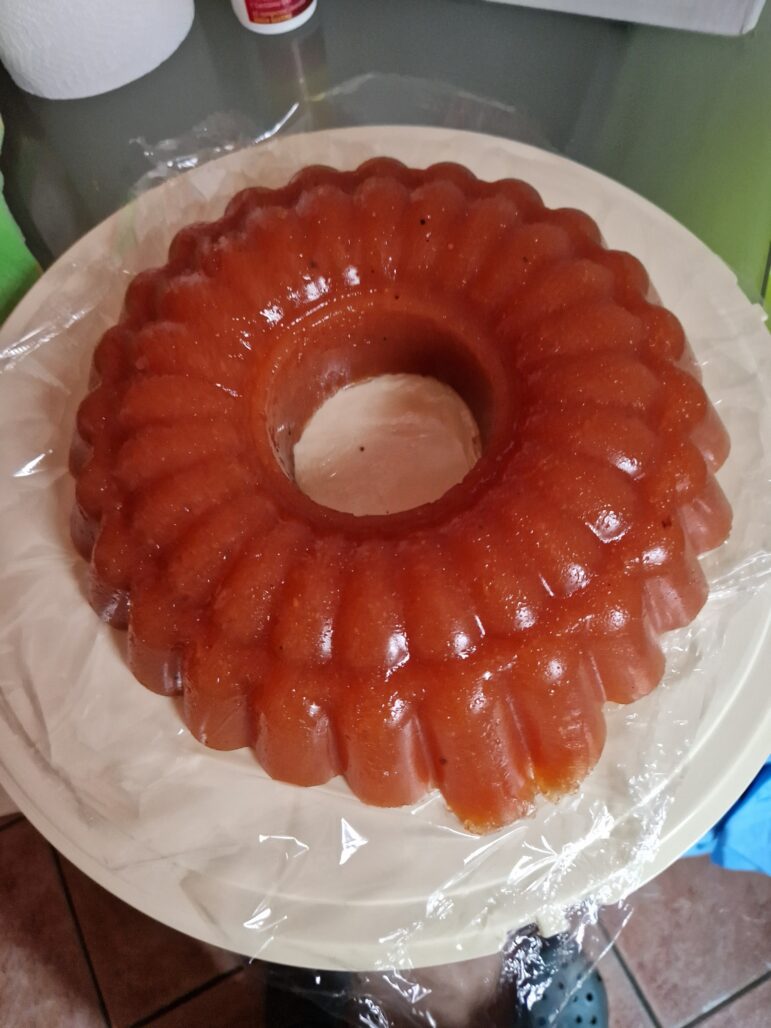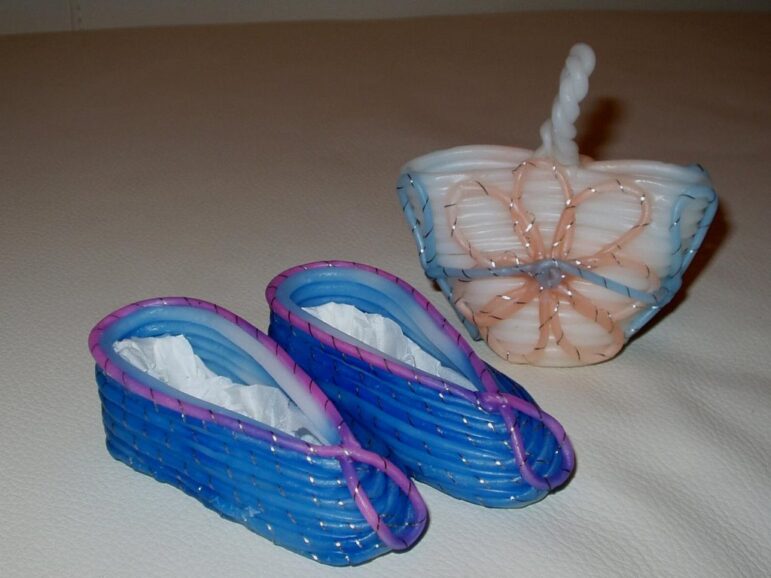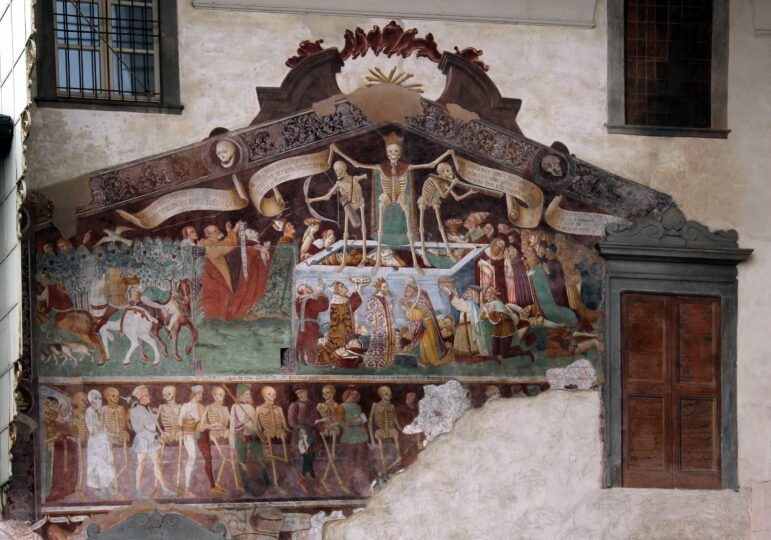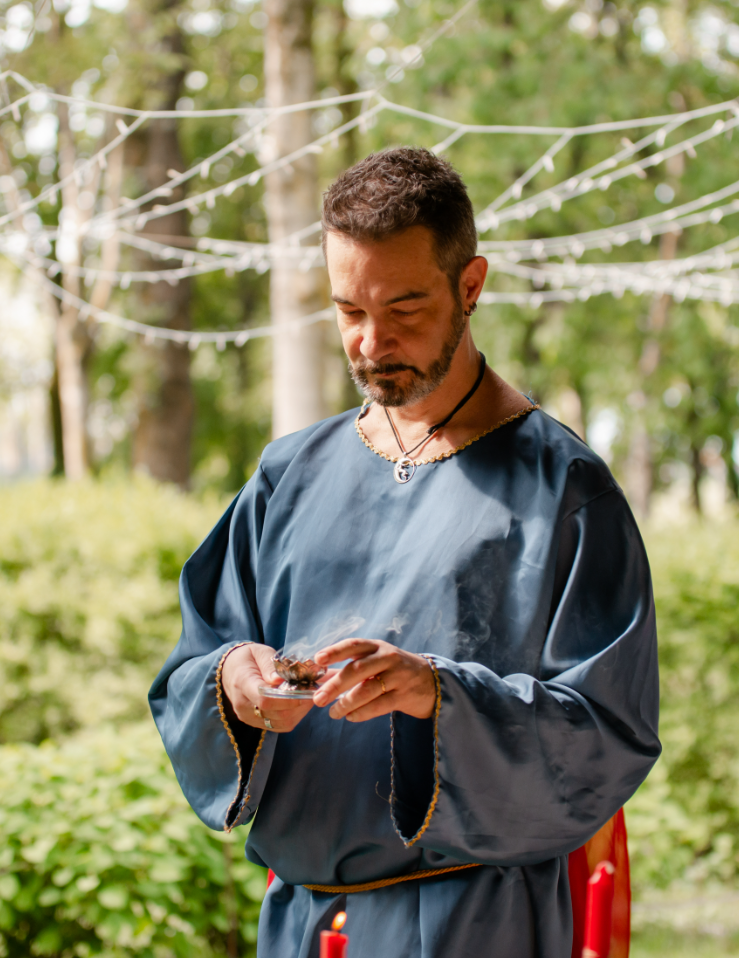
by Davide Marrè
Ognissanti, on the 1st of November, and il Giorno dei Morti, on the 2nd of November, have always been particularly heartfelt celebrations in my country. The custom of going to the various cemeteries to visit the dead, to clean the graves, and to bring fresh chrysanthemums is still widespread almost everywhere. Other local traditions are particularly interesting to me, as they are ones I have practiced since childhood.
Each region had its own traditions of honoring the dead and celebrating these days. Today, some of them have disappeared, others remain. Some have been revived and others wiped out by the spread of the “American” holiday of Halloween with its “trick or treat”. Each region had its own traditions to honor the dead and celebrate these days. Today some are gone, others remain. The spread of the “American” holiday of Halloween, with its “trick or treat”, has revived some and erased others.
La Cotognata
I would like to start with one of the customs that I know best, that of the cotognata (quince jam). This is a special jam made from some fruit, the quince. It can only be eaten after it has been cooked and processed. While it is still hot, it is placed in molds of various shapes. This is done before it sets. The preparation of the quince in October is the basis for its preservation during autumn. In Chiavari, Liguria, where I come from (and also in Sicily), it is one of the typical sweets offered during this festival.
A jam cake, orange/red in color and extravagant in shape, brought by the dead themselves to somehow ward off death.

A homemade cotognata. Courtesy: D. Marrè
When I was a child, I was given my fish-shaped quince and enjoyed it with my cousins on these very special days.
Today I am still making it with quinces from a tree planted many years ago by my father who now lives in Arona on Lago Maggiore. I have delivered it to him these very days. It is a special gift that he enjoys-as do yours truly. And sometimes even members of my coven can taste it if I don’t finish it first!
The tradition of cotognata is shared with Sicily. Here the custom of giving sweets to children is common. Here is a well-known Sicilian nursery rhyme where it is the dead who bring these sweet gifts:
Holy Souls
“Armi santi, armi santi (holy souls, holy souls).
Io sugnu unu e vuatri siti tanti: ( I am one and You are many)
Mentri sugnu ‘ntra stu munnu di guai (while I am in this world of trouble)
Cosi di morti mittitiminni assai”(Gifts of the dead put me many)
The Offiçiêu
To understand how local and localized some traditions are, we need to do a “microhistory.” Carlo Ginzburg talks about this in his book “Storia Notturna.” It is a semiotic approach that looks at the particular and not just the general and the universal. So, I have to dig in my heart to remember that always in Chiavari during my childhood, in these days, we were given Offiçiêu.
This is a custom that is common only in the particular area of Liguria from the Fontanabuona Valley to the sea.
These are candles used between the Novena of the Dead (October 24) and the Commemoration of the Dead (November 2). They consist of a long wax thread, which can be white, colored or adorned with a thin silver thread. The wire is bent several times until it forms a molded structure into booties, caps, flasks, baskets, and purses. They were reminiscent of items the dead might need.
On the Day of the Dead, we would unroll the thread and make many small candles from it. For each candlelit, the tradition was that a soul from purgatory would ascend to heaven, although it was not known which one. A real candle magic operation.

Offizieu. Courtesy: D. Marrè
The Bones to Bite
Having emigrated further north to the misty lands of Lake Maggiore, I discovered another flavor of this holiday that remains to this day: bones to bite into. An unleavened cookie and therefore of very ancient origin widespread throughout the Lombardy area, made of flour, hazelnuts, sugar, and egg white. These are the ossa da mordere, or oss da mòrd in the local dialect.
A somewhat more macabre dessert that was consumed particularly on the Day of the Dead, not really a trick or treat, but another way of celebrating death in an everyday act, somehow confining it.

Oratorio dei Disciplini , Clusone, Lombardy, Italy Courtesy: D. Marrè
La Lumera
Turnips have always been associated with heads here in Italy. The Italian expression “turnip head” is very common. It indicates a stupid person. Not only in the Milan area, where I live now but also in the Veneto region, the turnip head was used as the ancestor of the Halloween pumpkin. Only hollowed out and perhaps carved with two holes it probably resembled a skull or otherwise a head (of turnip precisely).
I have never witnessed this tradition. Today in Brianza, there are various lumere festivals that use the hollowed-out and sometimes carved pumpkin. However, I have some doubts about its authenticity….
Some friend kindly fashioned me a turnip in the shape of a skull–and it really does look like one, but what an effort! In the Milan area, there is just a particular species of turnip, the Milan turnip, which has a purple collar, is very large and well adapted for this purpose.
In the Veneto region, this custom is called lumassa. Pumpkins with candles inside are left on windowsills to show the dead the way. In more modern times they were replaced with convenient red plastic-covered candles.
The idea spread somewhat throughout Italy is that the dead, particularly the souls of purgatory, paraded on the night between November 1 and 2. Here traditions then divide: for some, the lights show the way, for others they prevent the dead from entering. Even lighting a lantern on the grave of the dead allows the dead to find they can keep it with them and find their way back.
The dead visit the places where they lived and sometimes the houses. Often in mountain villages the footprints of the dead were even found in the snow.
In the 19th century text on witchcraft by Cavagnari, a contemporary of Leland, the procession takes the name “tribulina”… the dead in the procession if crossed or lost may ask to relight their candle or lantern. Which one must never do, or the person doing so will die within the year.
The dinner of the dead
However, the relationship with the dead remains varied and ambiguous. If one cannot light a lantern for just anyone, one can certainly set the table to feed the dead.
In some regions of Italy, on the evening between November 1 and 2, the table is set again after dinner specifically for the deceased who wished to feed themselves during their pilgrimage. Sometimes an empty place is left at dinner in honor of the deceased.
Revisiting and recontextualizing
When I approached Neopaganism, and Wicca in particular, more than two decades ago now, it became a framework through which to breathe life and context back into old traditions, as had happened elsewhere.
In the public ritual of Samhain that we have been celebrating for fifteen years now, we have re-actualized some of these traditions. The procession of the dead, the Sicilian nursery rhyme, and the sharing of food with the dead are all part of our ritual. Along with typical sweets of the period such as bones of the dead, bread of the dead, and fava beans.
Modern witchcraft helps us to revive traditions. Reinsert them into a contemporary yet spiritual context, to revitalize them … in a country, where death, it should be remembered is female and not male as in northern and central Europe.
Death is a woman
Thinking of death as a woman and not as the Dark Lord of the Underworld brings us closer to a very earthly idea of the womb from which we are born and the womb from which we return. It reminds us of the inevitability of death that our civilization tries to exorcise in every way.
A beautiful and very eerie image that represents these days well is that of the fresco in Clusone, a town in Lombardy, “Triumph and Dance of Death.” This “dans macabre” where the living joins the dead, is a Renaissance warning in which death holds a scroll that says:
“Gionto la morte piena de equaleza/sole voi ve volio e non vostra richeza/ e digna sonto da portar corona/perché signorezi ognia persona”
“Death comes full of equality / I want only you and not your wealth / and worthy am I to wear the crown / for I am the Lady of every person.”
And it is with this spirit of equality that we also celebrate the Feast of the Dead. She makes us human. She waits for everyone. Beyond differences, she makes us part of humanity with her rites. She binds us to life itself, which even at this time of remembrance of the ancestors, is constantly celebrated.
 Davide Marrè is a professional journalist, author, and translator. He is a Wiccan high priest, trained in a mixed Gardnerian and Alexandrian coven, a member of a Qabalhistic magical order, and a former Master mason. Founder of Circolo dei Trivi APS, one of Italy’s largest neo-Pagan and Wiccan organizations, headquarters at Tempio della Luna, where he practices as a spiritual counselor and teacher. Davide is author of the “Inspirational Wicca Oracle Cards” and several books including “Conoscere la Wicca”, “La psicologia esoterica”, “Il Grimorio degli incanti”. He is an expert in local folklore, Aradia’s myth, and historical Witchcraft.
Davide Marrè is a professional journalist, author, and translator. He is a Wiccan high priest, trained in a mixed Gardnerian and Alexandrian coven, a member of a Qabalhistic magical order, and a former Master mason. Founder of Circolo dei Trivi APS, one of Italy’s largest neo-Pagan and Wiccan organizations, headquarters at Tempio della Luna, where he practices as a spiritual counselor and teacher. Davide is author of the “Inspirational Wicca Oracle Cards” and several books including “Conoscere la Wicca”, “La psicologia esoterica”, “Il Grimorio degli incanti”. He is an expert in local folklore, Aradia’s myth, and historical Witchcraft.
The Wild Hunt is not responsible for links to external content.
To join a conversation on this post:
Visit our The Wild Hunt subreddit! Point your favorite browser to https://www.reddit.com/r/The_Wild_Hunt_News/, then click “JOIN”. Make sure to click the bell, too, to be notified of new articles posted to our subreddit.